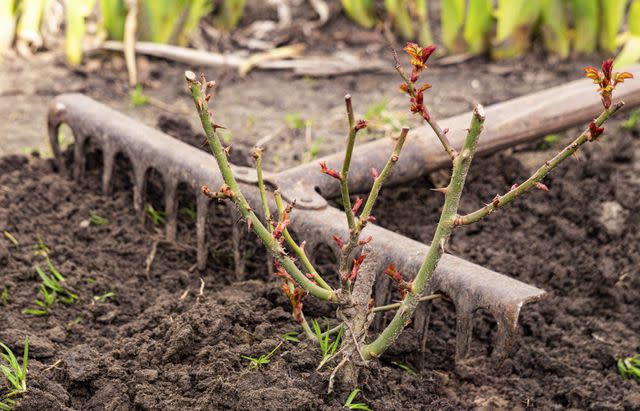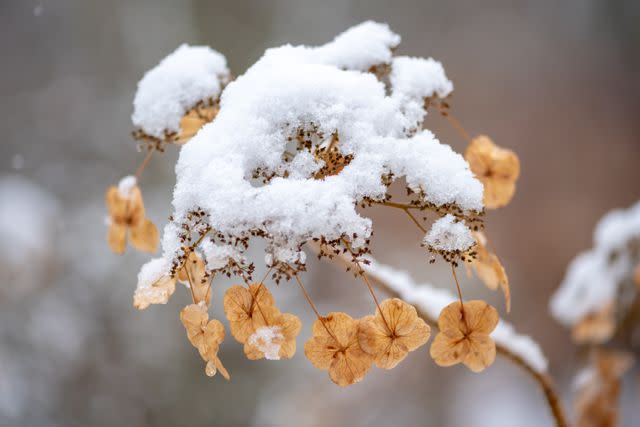Beware! These Are The Plants You Should Never Plant In The Fall
Autumn is a great time for planting, but some varieties establish best when you wait until spring to plant.
We have all heard the saying “Fall is for Planting,” but this adage does not hold true for all plants. Autumn is an excellent time to establish many trees, shrubs, and perennials, thanks to cooler temperatures and more frequent rains. These conditions put less stress on plants as they establish their root systems. Yet despite these advantages, not all plants benefit from fall planting. As the autumn weather draws you back into the garden it’s important to consider which plants you should never plant in fall.

Getty Images
Broadleaf Evergreens
Winter arrives slowly in the South, but when it does come it brings along dry northerly winds. Deciduous trees and shrubs lose their foliage and are unaffected by winter winds, but evergreens are a different story. The leaves of evergreen plants like boxwood, gardenias, hollies, and Southern magnolia are exposed to dry winds all winter long and continuously lose water to evaporation. Without a well-established root system to support the leaf canopy, many newly planted evergreens (and even some well-established plants) succumb to water stress. For evergreen trees and shrubs, it is best to wait until spring to establish new plants.
Fruits And Roses
Fruit trees and shrubs, many roses, and even some perennials like peonies are commonly sold bare root, meaning the plants are not potted. Bare root plants are dug directly from growing beds. The soil is washed from their roots and plants are packaged in plastic to maintain moisture. Bare root plants are traditionally dug during the dormant season, making late-winter and early spring the optimal time for planting. Historically, fruit trees and roses were available primarily as bare root plants, but today we commonly see these plants potted up in containers at the garden center. While bare-root plants require spring planting, container-grown plants can be planted in fall or spring.

Summer Blooming Bulbs And Annuals
Fall is the time to plant spring-flowering bulbs like tulips and daffodils, but those that bloom in summer are planted in spring. This includes summer-flowering bulbs like cannas, dahlias, callas, and freesia as well as those grown primarily for foliage such as caladiums and colocasia. Even if summer-flowering bulbs are winter hardy in your area, it is best to plant them in spring after the threat of frost has passed.
Annuals are another group in which planting time varies considerably. A handful of annuals are grown for winter color, such as pansies and ornamental kale, however most annual bedding plants are sensitive to frost and planted in spring for a summer display. Luckily, garden centers are not likely to carry summer annuals in the fall, so the selections available this time of year should be cold-tolerant and ready for fall planting.
Cold-Sensitive Shrubs
Winter hardiness zones are based on averages, and some winters simply get colder than the average. In the garden, we commonly see winter damage on cold-sensitive plants in those more extreme years, while mild or average winters leave the same plants unharmed. Species such as loropetalum, butterfly bush, bigleaf hydrangea, and crepe myrtle are good examples. Wait until spring to plant species that occasionally suffer winter damage in your area. If plants experience cold damage before they’ve had time to establish, they may not have the energy to recover.

Southern Living/Vlasova Evgeniya
Pay Attention To Winter Hardiness
Gardeners are known for pushing the limits when it comes to winter hardiness. This might include growing cold-hardy figs like ‘Brown Turkey’ in a zone 6 garden or planting a marginally hardy perennial such as Mexican bush sage at the edges of its range. Such experimentation is great, but it is best to wait until spring to plant marginally hardy plants. In fact, many of these more cold-sensitive plants thrive on summer heat, making spring establishment ideal.
Tips For Fall Planting
Even if you are not ready to plant, a visit to the garden center in autumn is a great way to identify new plants for the garden. You can observe trees and shrubs dressed in their fall foliage, helping you to identify those you might wish to add to the garden. Likewise, you may notice fall blooming perennials and shrubs overlooked during spring visits, when they were not in flower.
Pay attention to winter irrigation for both your existing beds and any plants you install this fall. It is easy to forget to water the garden in winter when many plants are dormant, however roots continue to grow until soil temperatures reach 40˚F. New and existing plants need regular watering (approximately monthly) throughout the winter months to keep roots and soil moist. Hold off on fertilizing fall plantings, as nutrients encourage new growth that doesn’t have time to harden off before freezing temperatures arrive. Fertilize in early spring, as active growth resumes.
For more Southern Living news, make sure to sign up for our newsletter!
Read the original article on Southern Living.

